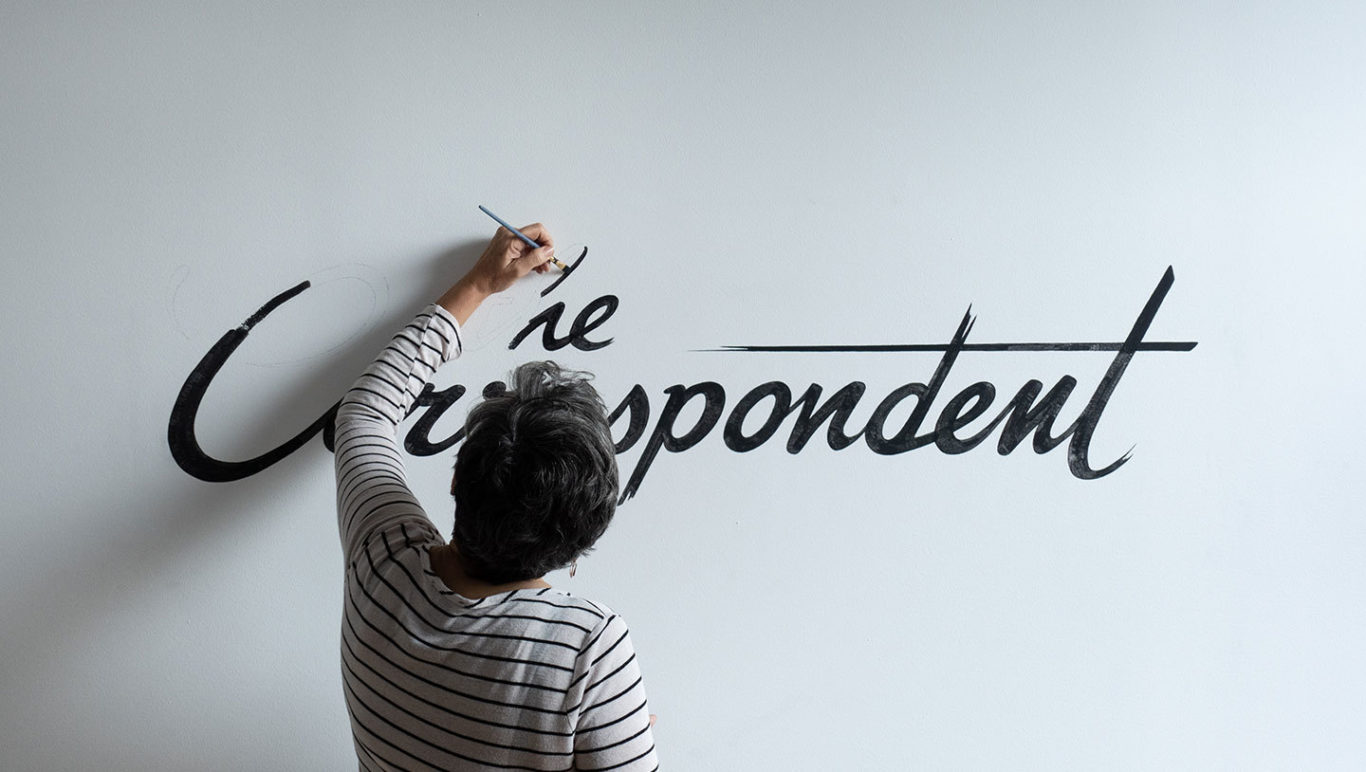
How zen is a non-breaking news notification?
We may find out in 2019. Today, the ambitious, contrarian founders of Dutch phenomenon De Correspondent launch a $2.5 million funding campaign to fund the launch of a sibling publication, The Correspondent, in the U.S. That initiative has been gestating for almost two years, ever since editor Rob Wijnberg and CEO Ernst-Jan Pfauth first set their sights on an American market 20 times the size of their native Netherlands.“The slogan we use for The Correspondent in the United States is going to be ‘Unbreaking news,'” Wijnberg told me last week. “That kind of summarizes it. We’re not ‘breaking news,’ and we don’t want to be breaking news, because it’s part of making us cynical and divided and less informed about the world. Let’s try something different.”
If we could all read Dutch, we’d see that “unbreaking news” means combining a lot of the streams of journalism reform we’ve seen English-language media play with in more limited ways. Solutions journalism. Explainer journalism. Constructive journalism. Best-practices–sharing journalism that believes communities and individuals can be smarter in their opinions and decision-making.
You see the theme: Journalism that does more than describe the various morasses we’re in — that aims to empower people to climb out of them.
“The Correspondent is committed to fighting harmful simplifications, and steering clear of breaking news that is meant to shock rather than inform,” reads one of the site’s “10 founding principles.” Wijnberg sees a lot of that across the American news landscape.
“We stay away from the news and say, ‘Hey — the news you can find everywhere. We’re going to dig deep into structures that are just not in the news at all, that should be in the news but are not.” That’s the first big differentiator he sees.
Second is the collaborative nature of the work: “Seeing your readers as a knowledgeable community that can actually inform the beat and the way you cover the beat, instead of just consuming the beat.”
And No. 3: “Then the fact that they can do this on an ad-free platform, fully member-funded. I know of no example in the United States, at least, that is completely ad-free, in this sense. Those are the three ingredients that differentiates us most.”

Ernst-Jan Pfauth, CEO and cofounder of The Correspondent, hits the streets.
The Correspondent U.S. intends to launch with an overall staff of 12 to 15, Pfauth says. That will include a reporting staff of five, a visuals editor, a copy editor, and a managing editor (a position they’re recruiting for now). Zainab Shah, former global lead for strategy and operations at BuzzFeed, is on board as its operations lead.
Visit The Correspondent’s launch page today and you’ll see a host of well-known faces urging you to buy a membership and fund the U.S. launch. At first blush, when the page was sent earlier to me, I thought the The Correspondent had journeyed in the wayback machine to early days of The Huffington Post, when it published lots of big names, including Julia Louis-Dreyfus, Larry David, Gary Hart, John Cusack, Walter Cronkite, Arthur Schlesinger Jr., and Norman Mailer.
Would The Correspondent’s new “ambassadors” write, I asked? No, said Wijnberg, they’re just endorsing the concept — becoming founding members and asking you to join them. Among them: Judd Apatow, Nate Silver, DeRay Mckesson, Rosanne Cash, Esther Dyson, William Julius Wilson, Manoush Zomorodi, W. Kamau Bell, Alan Rusbridger, Hari Kondabolu, and David Simon.
NYU professor Jay Rosen, long a prominent press critic early on endorsed The Correspondent’s uniqueness and has been a close advisor on the launch.In the Netherlands, Wijnberg, a young but known name in national journalism, was the face that led the way. In the U.S., The Correspondent needed surrogates.
On the surface, it would be easy to write off this new kid on the American block as a boutique effort, one that can could be easily lost in the welter of U.S. national digital news media. How can a small team of journalists compete?
That’s where the contrarian part of The Correspondent comes in, based on Wijnberg’s three differentiators and more. Pfauth, Wijnberg, and their two business partners have proven their strategy can work over the past five years.
In the Netherlands, 60,000 “paying members” pay the salaries of 51 full-timers to produce a smart, knowledgeable take on the news and on issues the not-inconsiderable issues faced by that country’s people. In 2017, De Correspondent operated on a $4.5 million budget, 94 percent of it coming from reader revenue. (Pfauth provides a good summary of De Correspondent’s progress here.)

From left: Zainab Shah, Jessica Best, Rob Wijnberg, Baratunde Thurston, and Ernst-Jan Pfauth.
The Correspondent (the U.S. name) builds on the same model. The site’s 10 principles, in place since its inception, have served as guideposts for many looking both for models and inspiration.
In the U.S., De Correspondent has gotten frequent mention at journalism conferences since its founding (with a $1.7 million crowdfunding campaign). In Europe, both Denmark’s Zetland and Switzerland’s Republik cite Correspondent as an inspiration for them.“We’ve borrowed a lot,” Richard Hoechner, a cofounder of Zurich-based Republik told me last week on a visit to the U.S. Republik began publishing (in German) in January this year and already counts 22,644 paying members at roughly $22 a month — though more than 20,000 pay on an annual basis, a great vote of confidence. It supports a team of 41.
While these and other sites have adapted some of De Correspondent’s ideas, The Correspondent embraces all of them. There is no news company I know of that builds its business — and its journalism — so completely around the reader. In short:
Most importantly, the membership model isn’t just about revenue. CEO Pfauth connects the dots: “Most U.S. newsrooms see membership solely as a business model, not as a form of journalism. Yes, members contribute money, but it’s equally important that they are involved in the journalism and the communities around the beats. When a member knows something about an issue we cover, they should feel welcome to share that knowledge. Everyone in the organization needs to be aware of that, from the marketing people to the copy editors. At De Correspondent, that is the case — and that will be our competitive advantage at The Correspondent.”
How many modern news and publishing executives would shout “Amen!” at that sentiment?
All that said, The Correspondent would enter the national discourse at a difficult time, and as a decidedly small herring in a vast ocean of content.
Vice, Vox Media, and BuzzFeed all find themselves retooling and retooling. They got big fast, saw their growth interrupted by runaway Google/Facebook ad dominance, and now diversify, layoff and restrategize for the 2020s. The New York Times and The Washington Post have created a twofer national newspaper renaissance and now find themselves joined by new ambitious, deep-pocketed spenders. Those include Marc Benioff, buying and adding 60 staffers to Time’s newsroom, and the Emerson Collective’s impressive new investment in making The Atlantic an even bigger player. Both The Atlantic and Time aim to be go-to “magazine” sources (whatever magazine means these digital days) for the age of Trump and have, along with The New Yorker, proven adept in sensing this political and cultural moment.
There’s Patrick Soon-Shiong’s emerging push at the L.A. Times. We can also expect the new owner of Fortune, Thai businessman Chatchaval Jiaravanon, to invest in that other Time Inc. refugee, as veteran news exec Alan Murray lays new plans. Then there’s the Financial Times, still a leader in the small pack of true transformers in the digital journalism business. It is now backed by Nikkei, a more enthusiastic owner than Pearson had been.
America circa 2018 needs lots of high-minded news reporting and sensemaking, so all of these investments are welcome.
The Correspondent intends to add to our national discourse. With as small a play as it’s now planning, it could easily get lost among all those (and other) bigger and heavily talented players.
But the important thing to watch is not what The Correspondent does that’s the same as its gigantic competition — but what it does differently. It might strike gold, but one way or the other, it’s bound to greatly influence the next generation of digital news innovators.